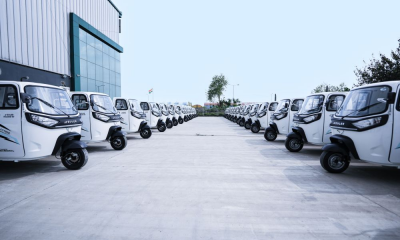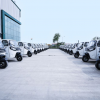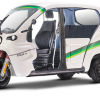The world is on the brink of a technological revolution, and at its forefront lies the age of electric vehicles (EVs). Recent research by Canalys predicts a significant surge in global EV sales, with projections indicating a growth of 29%, reaching 13.7 million units and penetrating 17.1% of the market by 2023. This surge reflects a decade-long transition from fossil fuel-based vehicles to electric-powered alternatives, driven by various factors reshaping the global economy.
In the last decade, a transition from fossil-fuel vehicles to electric-based vehicles in the last decade gained momentum. The global energy use will continue to grow in all major end‐use sectors. The total final consumption (TFC) will increase by around 20% in 2020–50. The demand for fossil fuels will decrease, and the shift will be toward electricity, renewable power, and hydrogen.
According to a study by the International Energy Agency, electricity’s share will rise from 20 to 30% by 2050. Since electric vehicles (EVs) are up to three times more energy-efficient than internal combustion engines (IC engines), the transportation sector has experienced the greatest decrease in energy demand. With more than 3 billion electric vehicles on the road by 2050, it is anticipated that batteries will account for more than 60% of the clean energy technology equipment market. According to the paper, batteries are expected to have a significant impact on the new energy economy and emerge as the primary source of demand for vital minerals like cobalt, nickel, and lithium.
Over the past ten years, sales of electric vehicles have increased dramatically in a number of nations, particularly in North America, Europe, and Asia. The presence of government policy support is one of the criteria that determines how well electric vehicles will penetrate the market. An essential part of an electric car are its electric batteries. These are the energy sources that power the engine. What sets electric vehicles apart is their energy source.
The EV industry accounted for 135.35 trillion, or over 55% of the entire additional output, and produced more than half of it. With a 10% additional output, the electric vehicle battery industry is the second largest globally. The manufacturing of motor vehicles, trailers, and semi-trailers comes in second at 9.2%, followed by the manufacturing of rubber and plastic products at 2.8%, the mining of minerals for chemicals and fertilisers, the production of salt, and other mining and quarrying at 2.3%.
However, the adoption of electric vehicles does not necessarily reduce emissions. Several studies have concluded that the environmental impact of developing electric vehicles will depend on the mix of power generation and its carbon intensity concluded that electric vehicles powered by coal-based electricity could reduce emissions such as increased CO2. Countries like India, China, and Indonesia will not benefit from electric vehicle penetration unless they decarbonize their power plants.
Another economic impact of EV production is the creation of new jobs. EV production creates more than 5 lakh job roles in the economy, representing a 0.5% increase. Approximately, 85% of the additional employment comes from other industries with the greatest increase in employment. The electric vehicle battery and the electric vehicle sector contributed 8% and 6%, respectively, to additional economic employment. Sectors such as the sale, maintenance, and repair of motor vehicles, motor vehicles parts, motorcycles, motorcycle parts, and accessories and the wholesale trade, except for the motor vehicles and motorcycles sector, are in the top ten sectors with additional output, added value, and labour, as a result of the production of electric vehicles globally.
The addition of the electric battery and electric car industries does not significantly change the economic structure, especially when viewed from the technical coefficient of the Indonesian economy, as indicated by the distribution of technical coefficients before the addition of the two sectors. The existence of a new sector does not significantly impact other sectors. In addition, the magnitude of the export of electric vehicles is still relatively small compared to the entire economy.
According to a McKinsey & Company report, sales of new electric two-wheelers in cities could comprise as much as 30% of electric cars by 2030. To properly realize the financial and environmental advantages of electrifying economies worldwide, more funding, creativity, and cooperation will be needed. Economies that adopt electric vehicles can reduce carbon emissions, enhance air quality, and create new opportunities for employment growth in sectors like manufacturing, technology, and infrastructure development.
In conclusion, by 2024, electric vehicles will have a significant economic impact on global markets due to the significant expansion of manufacturing facilities and technological advancements, the emergence of new markets and players, and the significant increase in market share in those where EVs are already widely used.
With the investment in electric mobility by established automakers and developing businesses, as well as the expansion of infrastructure for charging and switching between vehicles and rising consumer acceptance, the automotive industry is undergoing a significant transformation. As a result, there are many opportunities for both long-term economic growth and environmental sustainability with electric vehicles. In the brief time we have seen 2024 thus far, the trends suggest that the numerous firms’ efforts over the last few years have set the stage for a major increase in EV penetration across product categories beginning in 2024.


































